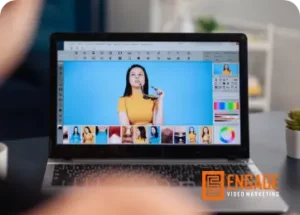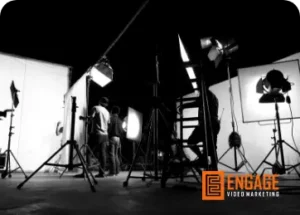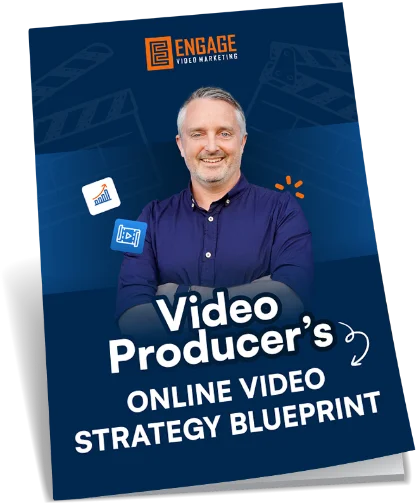Have you ever been in one of those awkward situations at a business networking event perhaps where someone comes up to you and says, “So, what do you do?” Do you have an answer? Is it clear, do you scramble around to try and find the words and explain the complexity of what you do in your business and how you help people in all the various services that you can offer?
Donald Miller, author of Building A StoryBrand says time and time again, “If you confuse, you lose”. So, in this article I’m going to share a super effective and valuable exercise that you can do to clarify your marketing message and maximise the impact for your business.
Over the next few minutes we’re going to get tactical and practical, as I share with you a methodology that that I use when I’m working with my coaching clients and video marketing clients in order to help them get clear on communicating what it is that they actually do, and how they actually help people. Because let’s face it, in business, if you can’t clearly and quickly communicate what you do and why it matters to a prospective customer then you have the potential to confuse and lose.
So, grab a notepad, or download the template which you can grab here and let’s run through my 1-4-1 Method and by the end of this process you’re going to have a very clear, single sentence statement that defines what it is that you do and how you help people in business.
The 1-4-1 Method is about braindumping your ideas on to one page in a structured way, then refining that down to 4 specific sentences, before finishing up with your one sentence statement that perfectly sums up your value proposition for your business. Okay, let’s dive in.
Who do you help?
So the first step. The one is to write basically a single page outline of who it is that you help in your business and how you help them achieve the outcomes that you achieve, and we’re going to break this page down into four main paragraphs.
So, the first paragraph, you’re going to just offload everything that you can write about who it is that you help, your audience, the first paragraph is all about really getting clear and specific on who your audience are, who your ideal customer is.
And here we’re not going to be writing about loose demographics like they’re, you know, a 30 to 40 year old male who lives in a particular geographical region, you need to get specific, so that you can almost paint a picture of this single person who is your ideal customer – your ideal client.
It’s valuable here to potentially even describe a day in their life like so what do they do when they get up, how do they live their life. What are they going through in their life What does their life look like, because when you can picture that person that you’re able to help, then you can get really clear on the language that you need to use in order to reach that person correctly in your marketing and communications.
So your first brain dump paragraph on the page is going to be about – who do you help.
What problems do they face?
Next, the second paragraph, here you’re going to write down as much as you can to get clear on what are the problems that that person faces. So, what are they like before they ever come and do business with you or use your products or services? And importantly here – we want to be focusing in on both the internal and external problems that they face. So internal problems are, you know what’s going through in their in their head in their heart, … how are they feeling? What keeps them up at night, you know, what are the day to day thoughts, they’re having around the problem that they have that you can help them solve, and how do they feel internally about that.
And then the external problems is, how do those internal problems kind of show up in their real life. What are the physical, real world things that are happening in their life, that are causing the dissatisfaction that they find themselves in at this stage? And when we get really clear on these and emphasize that problem that they’re facing, then we can start to contrast this against the next paragraph.
What is the outcome?
Next, we’re going to write about the outcome. So, what does life look like after they’ve done business with you or they’ve worked with you or they’ve, had your product in their hands.
You’re going to brainstorm here the outcome of doing business with you. So, again you want to focus on the internal and the external.
Internally how are they feeling about their life, NOW. What does their new normal look like, and then externally, you know, how’s that showing up in their day to day life, what do they have, what are they surrounded by, who are the people that they’re engaging with… these are external things.
So, again you want to be super clear here, take some time to picture what your ideal customers life looks like now.
And it’s also helpful here to consider “future pacing” as well – which means painting a picture of what their future might hold, now. And in contrast to what their future potentially held prior to doing business with you. So, what’s the cost, potentially, of not doing business with you, not working with your brand or business, it’s a really powerful thought experiment to go through on this page here and write down what does the future hold now that they’ve done business with you.
How do you help them?
And then the fourth paragraph or section of this page of brain dumping is all about how you actually help them. What’s the process of transformation that you take them through? So, what is your process, what is your framework or your superpower in business, and how do you actually work with your clients to get that result – the outcome that we’ve just gained clarity on. How does the transformation actually take place? You can think of this as the vehicle that allows people to get from A to B, from that point of dissatisfaction that we outlined earlier to the satisfaction or the positive outcome that we outlined earlier as well. The transformation becomes the vehicle that gets them from one place to the other – the way that you help them do that.
So, get really clear here in this fourth paragraph of how you actually help your clients.
Okay, well done… that’s step one of the 1-4-1 method, you should now have a full page at least with some pretty clear information written down around those four key aspects of your messaging.
It’s action time now! If you really want to get results from this article and clarify your message, I encourage you right now to PAUSE this video. Grab that template here or a piece of paper and get these 4 paragraphs down.
Okay, now here’s where things really get fun.
The second step of the 1-4-1 method is all about distilling your longer paragraphs down into a single sentence each. 4 sentences in total. So, you’ll end up with one sentence about who your ideal audience is, you’ll end up with a second sentence about what their problems are that they’re facing before they work with you. The third sentence is about what does their life look like after they’ve worked with you or what’s the outcome of working with you. And then the fourth sentence is, how do you help them- what’s the method of transformation.
This process sounds easy, but it rarely is. You’ve put some detailed thought into those first 4 paragraphs, and now I’m asking you to decide on which parts are MOST relevant, or MOST impactful for your ideal audience to hear from you. You want them to read these sentences and say to themselves. Oh- you get me. You’re talking to me soul! 🙂
If you’re playing along at home, now’s the time work on crafting your powerful 4 sentences. I’m looking forward to hearing how you go.
Right, let’s bring the 1-4-1 Method home with step 3. So, the challenge now is to be a bit of a wordsmith, and really massage the ideas that you’ve distilled into those four sentences into a concise single sentence statement, that will become your clear message of what it is that you do. This may require a bit of drafting, refining and tweaking but let me tell you, when you’ve worked through this process properly. That final statement that you’re ending up with here should be a very powerful tool for your communications and marketing.
If you’re ready for step 3, then get that single sentence written. And when we come back, I’m going to share some real-world examples of this process to help you understand how powerful this framework can be.
How’d you go? Can you do me a favour and drop your single sentence statement for your business into the comments? I’d love to celebrate with you and see how this process has worked for you.
I want to share now, some real-world examples of these clarity statements. Now I’m not going to share with you the entire page or notes from step 1, or the 4 sentences distilled in step 2, but I am going to share with you the outcome of this process, which was their single brand statement for these businesses I’ve worked with.
The first example here, was from a mortgage broker. Now this mortgage broker has a fairly unique process of being able to work with clients, remotely, in many cases, to help them get in a position to be able to successfully seek the funding that they’re looking forward to get into a property, so he has a very unique process here and I wanted to help him define it down so they differentiated him from other mortgage brokers who work more traditionally, and here’s the sentence that we came up with.
I want you to pay attention, for four key things that we’ve talked about in the 1-4-1 method and see how we’ve distilled it down into one impactful sentence. Okay, so, here’s the first example from the Mortgage Broker
“We help first homebuyers and new investors who are wary confused and overwhelmed by property financing to avoid the red tape and secure their ideal loan terms, through our five step loan readiness online program, and personal lending concierge service.”
Are you with me? Okay, let’s break that down. “We help first homebuyers and new investors” That’s the first step, the audience who your ideal audience is… “ who are wary, confused and overwhelmed by property financing”. So that’s their problem. That’s where they are before they work with you, they’re wary, overwhelmed and confused. “To avoid the red tape and secure their ideal loan terms”. So that’s the outcome so they’ve avoided – red tape, and they’ve secured their ideal loan terms. “through our five-step loan readiness online program, and personal lending concierge service” That right there is the vehicle of transformation, that’s how they help people through that process. It’s clear right.
So, let’s break this down with another example and this example is a personal trainer, she’s kind of a personal trainer/life coach so she doesn’t just work on fitness she also works on health and she works on kind of internal stuff as well. So, very powerful and really good at what she does, but she was really not good at communicating how it is that she does this for people. So, we worked on creating this single brand statement using the 1-4-1 method. Again, look for the four stages of this process as we go through this statement.
“I empower time poor new mums who are feeling rundown, unmotivated and with poor self-esteem, to love their body and thrive in a busy life by developing new daily habits in health, happiness, and higher self.
Can you spot the 4 phases of the 1-4-1 played out here?
So, I hope this has been useful to you. I hope it’s a process that you can understand how to use both in your own business, or if you work with other business on clarifying their marketing, then you can apply this process with them.
Once you have your brand statement, and you’re happy with it. This statement can be used on your website, in your sales conversations, when you meet people at networking events, in a phone script, and of course, to inform your video marketing too.



